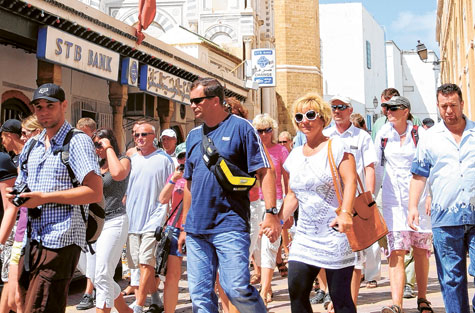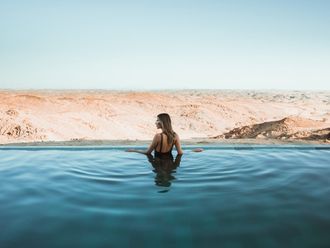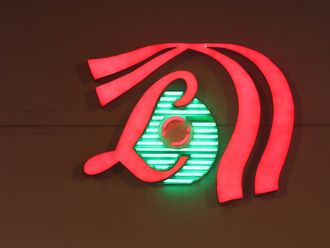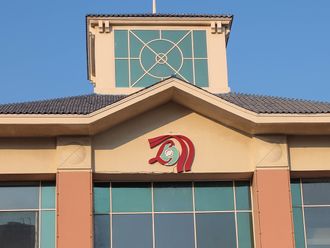
Tunis: Long known for its sea, sand and sun, Tunisia has a new claim to fame as the birthplace of the Arab Spring.
Popular demonstrations toppled the tiny North African nation's longtime dictator Zine Al Abidine Bin Ali in January, inspiring a wave of pro-democracy protests that has swept the Arab world, from Morocco to Bahrain.
While the uprising that ended Bin Ali's 23-year-long autocratic rule went relatively smoothly in Tunisia the hordes of European tourists that long thronged to the country have largely evaporated. Tunisia's border with warring Libya remains dangerous, and poor inland towns still see sporadic protests, but Tunis and the resort towns have regained their pre-revolt calm, and the country is on a path toward democracy.
Still, the country's Mediterranean beaches and millennial ruins are largely deserted, and bargains abound. Travel operators who offer all-inclusive package deals at seaside resort hotels have slashed their already reasonable rates in a bid to lure visitors. But while those getaways abound in beachside relaxation, they can be isolating and don't provide much of a taste of the country's unique local colour.
For a stiff dose of it, try the capital, Tunis, a sprawling metropolis peppered with vestiges of its ancient past. The Tunis suburb of Carthage was founded by Phoenicians in the eighth century BC and was the hometown of Hannibal, the general who crossed the Alps with elephants to launch his celebrated 218 BC attack on Rome.
Roman past
Sacked by the Romans — who famously sowed the soil with salt — Carthage would become Rome's first colony in Africa. You can still visit the vestiges of the city's Roman past, including the remains of villas, the ruins of a 1st century AD amphitheatre, and the Antonine Baths, a seaside thermal bath complex.
Carthage is also home to another, more recent, historical site, Bin Ali's sprawling presidential palace. Police guard the compound, which has been empty since the former president and his family fled into exile on January 14.
If Carthage doesn't sate your appetite for Rome, a trip to Tunis' stunning Bardo National Museum is in order. Housed in the former royal palace, the museum boasts of the world's premier collections of Roman mosaics, with room after room filled with mammoth, often impeccably preserved tiny tile masterpieces.
Tunis also has among the biggest and best conserved madinas (the old city or historic centre) in the country — indeed, in much of the Arab world. A warren of narrow streets with whitewashed buildings studded with wooden doors painted a rainbow of eye-popping hues, Tunis' madina dates back to the eighth century and is a Unesco World Heritage site.
The Zitouna Mosque is both its geographic and spiritual heart. Built in the ninth century, it was remodelled and added on to by successive dynasties, each determined to outdo the last. Non-Muslims can visit the complex, with its breathtaking arched courtyard, mornings every day but Friday.
Tourbet Al Bey is also worth a visit. Buried deep in the madina, it's an 18th century mausoleum where Tunisia's monarchs, or Beys, as well as their children, wives and concubines were buried in elaborate marble sarcophagi.
Vendors in the madina who shuttered their shops during the revolution are again open for business.
Here are some of the best shops in the sprawling, 270-hectare madina, where you can procure everything from cheap Chinese-made flip-flops to hand-cast gold jewels, as exquisite as their price tags are exorbitant:
Ed-Dar is equal parts shopping extravaganza and cultural outing, a visit to this chock-a-block store is a must. Every surface in the 15th century Arab house-turned-emporium is hung with antique rugs, stacked with hand-glazed ceramics and shines with intricate silver jewellery.
Three brothers, Ali, Yousuf and Taoufik Chammakhi, founded the store in their childhood home in 1980 after their collection of handicrafts culled from the breadth and width of the country burgeoned out of control. Most of the pieces here are one-of-a-kind heirlooms that were bought directly from families that had kept them - sometimes for centuries.
Prices range from a few dozen dinars for a tile, hand-painted by Ali Chammakhi himself, to tens of thousands of dollars for a collection of gem-covered military decorations with pieces dating back to the 1750s. Don't miss the rooftop terrace, a lush oasis of potted plants with a knockout view over the madina.
Berber carpets
Just downstairs from Ed-Dar, affable rug-seller Yousuf Gassem hawks his wares in a tiny shop piled high with Berber and Persian carpets, kilims and rugged tent rugs made from camel hair. There's something for every budget, from small synthetic models that run for less than $100 (Dh367) to mammoth, century-old kilims in vegetable-dyed wool that fetch upward of several thousand.
Gassem's assistant works up a sweat as he unstacks the carpets, and you might be asked to help unfurl them. If something strikes your fancy, be prepared to for marathon negotiations, which take place over seemingly endless glasses of sweet mint tea.
Next door, Gassem's brother Ridha sells an impressive array of antiques out of an equally tiny locale. A veritable Ali Baba's cave, it's piled high with petrol lamps, hammered copperware from the 1920s, and old-school hand-embroidered curtains, napkins and sheets as well as centuries-old tiles rescued from old Arab houses.
A nearby covered lane houses the "Souk des Chechias," where an ever-dwindling number of craftsmen hand-make the boiled wool hats, like stunted fezes, that were once an integral part of the national dress. Since Tunisian men adopted the universal uniform of jeans and T-shirts, the chechia, imported from Spain in the 14th century, has largely fallen out fashion, and the lion's share of production is now shipped to Libya and Nigeria.
If you shop up an appetite, the madina is full of little restaurants where you can grab grilled meats, egg and tuna-filled fried pastries or tomato and bell pepper stews — all smeared with harissa, the piquant chili paste Tunisians use on virtually everything.
Before booking a trip, check for travel advisories from the US State Department.












